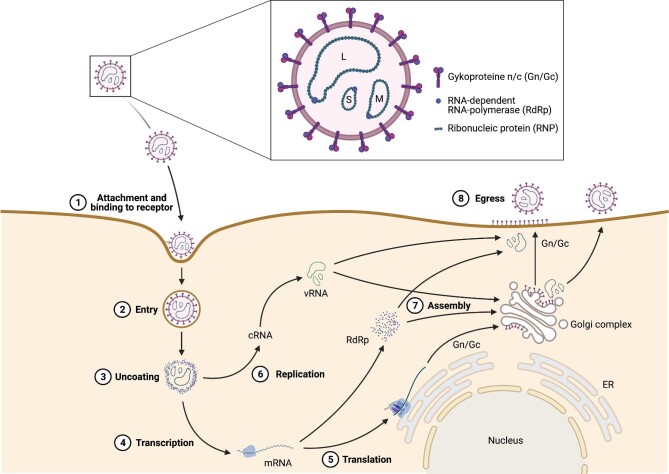FIGURE 3:
Hantavirus structure and life cycle. Hantavirus virions have a trisegmented single-stranded ribonucleid acid (ssRNA) genome, referred to as L (large), M (medium) and S (small) segments. The particle's surface consists of the glycoproteins Gn and Gc and viral RNA-dependent RNA polymerase (RdRp) is essential for hantavirus replication and transcription. The hantavirus life cycle consists of eight essential steps. (1) Hantaviruses attach to the host cell's surface by binding to surface receptors with their glycoproteins. (2) The virion particle enters the host cell either by Clathrin-dependent (Old World hantavirus) or -independent endocytosis (New World hantavirus). (3) Hantaviruses are uncoated in the host cell's endosomes and lysosomes, facilitating the release of the viral genome and proteins. (4) Viral RNA is transcribed by the RdRp and (5) viral mRNA is translated into viral proteins, hijacking the host cell's machinery. (6) vRNA is replicated by RdRp and (7) all viral components are put together at the Golgi apparatus (Old World hantavirus) or directly at the cell membrane (New World hantavirus). (8) Mature virion particles egress the host cell by fusion of the Golgi apparatus (Old World hantavirus) or the viral vesicle (New World hantavirus) with the cell membrane. ER: endoplasmic reticulum; Gc: C-glycoprotein; Gn: N-glycoprotein; L: large segment; M: medium segment; S: small segment; vRNA: viral RNA. Source: Figure created with Biorender.com.

